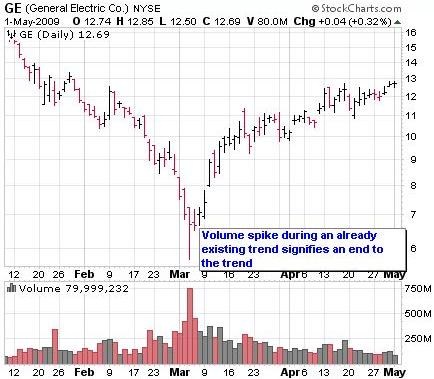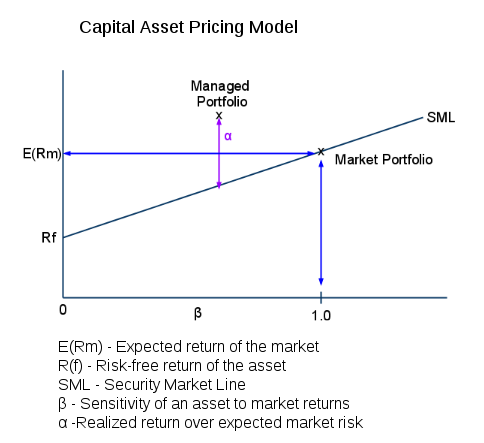Contents
Ø Redemption- Redemption on maturity – Unless previously redeemed or purchased by the company, the bonds are redeemed at par on the expiry of a pre-determined period from the date of the allotment. Put Option- When the Bondholder redeems the bonds after expiry of a certain period commencing from the date of allotment, he is said to exercise the Put Option. Call Option- When the company purchases the bonds from the bondholders at discount, par or premium in the open market or otherwise, the company is said to exercise its Call Option. If the FCCB issue is up to USD $750 million for refinancing existing outstanding FCCB, it will be available under the automatic approval route. In case of partial conversion of outstanding ECB into equity, borrowers are required to report the converted portion in form FC-GPR to the Regional Office concerned as well as in form ECB-2 clearly differentiating the converted portion from the unconverted portion. The words « ECB partially converted to equity » should be indicated on top of the ECB-2 form.
These corporate bonds are sometime issued as convertible bonds with the option of being converted to equity. Bonds carrying such optionality element attract the investors making debt investment in the bonds issuing entity. A bond that can be converted into a fixed amount of the company’s equity is usually done at the discretion of the bondholder.
The buyback will not have any effect on the bond holders not opting for the buyback or on the non-participating bond holders of companies opting for the buyback. Iii) where the fresh ECB is co-terminus with the outstanding maturity of the original FCCB and is for less than three years, the all-in-cost ceiling should not exceed 6 months Libor plus 200 bps, as applicable to short-term borrowings. In other cases, the all-in-cost for the relevant maturity of the ECB shall apply. Borrowers are permitted to either keep ECB proceeds abroad or to remit these funds to India, pending utilization for permissible end-uses.

Ø Indian Companies, eligible to issue shares to persons residents outside India under the Foreign Direct Investment Scheme can raise foreign currency resources aboard through the issue of American Depository Receipts or Global Depository Receipts . Keeping in pace with the latest economic-financial trends, Indian Corporates have started issuing these convertible bonds in international markets commonly known as Foreign Currency Convertible Bonds. Debt-Instrument means an instrument which creates or acknowledges indebtedness, and includes debenture, stock, bonds and such other securities of a body corporate, whether constituting a charge on the assets of the body corporate or not. FCCBs may offer investors a higher yield than traditional debt securities, as the option to convert into equity represents a potential upside.
What are the Features of Foreign Currency Convertible Bond (FCCB)
It is a type of bond issued by a company in a currency other than the issuer’s domestic currency. The bond can be converted into the issuer’s domestic currency or into equity shares of the issuer at a predetermined conversion price. FCCBs are often used by companies as a way to raise capital from international investors. They can be attractive to investors because they offer the potential for capital appreciation if the issuer’s domestic currency appreciates relative to the currency in which the FCCB is issued, as well as the potential for income from the bond’s coupon payments.
- Financial institutions dealing exclusively with infrastructure or export finance such as IDFC, IL&FS, Power Finance Corporation, Power Trading Corporation, IRCON and EXIM Bank are considered, on a case by case basis.
- Utilisation of ECB proceeds is not permitted for working capital, general corporate purpose and repayment of existing Rupee loans.
- Accordingly, eligible borrowers, proposing to avail ECB beyond the permissible all in cost ceiling specified at para 1 may approach RBI under approval route .This relaxation in all in cost ceilings will be reviewed in December 2009.
- These instruments include debt securities like debentures & bonds, loans, trade credit, and currency and deposits.
The amount received from the issue of FCCB should be utilised as per the guidelines of External Commercial Borrowing . The functional curve of the carotid baroreceptors is important because it helps to regulate blood pressure within a normal range. When blood pressure falls below a certain level, the activity of the baroreceptors increases, leading to an increase in heart rate and blood vessel constriction. Conversely, when blood pressure is too high, the activity of the baroreceptors decreases, leading to a decrease in heart rate and blood vessel dilation. The Full Form of FCCB in Medical is functional curve of carotid baroreceptor.
If the price of the stock is below the conversion price at the time of the conversion, then the bond will not be converted. FCCBs offer investors the potential for both income from the bond’s interest payments and the potential for appreciation if the issuing company’s stock price increases. However, FCCBs also carry additional risks, such as exchange rate risk, as the value of the bond may be affected by changes in the exchange rate between the foreign currency and the investor’s domestic currency. The choice of security to be provided to the lender/supplier is left to the borrower. However, creation of charge over immoveable assets and financial securities, such as shares, in favour of the overseas lender is subject to Regulation 8 of Notification No. FEMA 20/RB-2000 dated May 3, 2000, respectively, as amended from time to time.
RBIs Regulatory Framework:
Individual lenders from countries wherein banks are not required to adhere to Know Your Customer guidelines are not eligible to extend ECB. Ø The bond to equity convertible option attached to the FCCBs is subject to the Reserve bank of India guidelines. Such FCCBs can be converted by exercising the Call option and Put option to suit the structure of the Bond. Technically debenture is an unsecured corporate obligation while bond is secured by a lien or mortgage on the corporate property.
FCCBs may have a fixed or floating conversion price, which is determined based on the market value of the underlying shares at the time of conversion. The period of such Letters of credit / guarantees / LoU / LoC has to be co-terminus with the period of credit, reckoned from the date of shipment. The funds should be invested in such a way that the investments can be liquidated as and when funds are required by the borrower in India.

Banks and financial institutions which had participated in the textile or steel sector restructuring package as approved by the Government are also permitted to the extent of their investment in the package and assessment by Reserve Bank based on prudential norms. Any ECB availed for this purpose so far will be deducted from their entitlement. Borrowers may enter into loan agreement with recognised lender for raising ECB under Automatic Route complying with the ECB guidelines without prior approval of the Reserve Bank. The borrower must obtain a Loan Registration Number from the Reserve Bank before drawing down the ECB. The existing ECB may be refinanced by raising a fresh ECB subject to the conditions that the fresh ECB is raised at a lower all-in-cost and the outstanding maturity of the original ECB is maintained. The Indian company shall open an escrow account with the branch or subsidiary of an Indian bank overseas or an international bank for buying back the FCCBs to ensure that the funds are used only for the buyback.
Tax on Foreign Currency Convertible Bonds
Foreign Exchange Management Act, 1999 defines foreign currency under section 2 as foreign currency means any currency other than the Indian currency. Hence, the FCCBs have yet again proved to be an economic-financial rescue means by propping up the budget airline especially as the markets sloth adds to its undesirable and downbeat performance. Ø Investment in real-industrial sector including SMEs https://1investing.in/ and infrastructure sector through expansion, modernization, import of capital goods, new projects etc. The ECB Master Circular lays down that borrowing funds through FCCB issue can be accessed under two routes, viz., FCCBs Issue upto US $ 500 million under the Automatic Route FCCBs Issue beyond US $ 500 million with the specific approval of the Reserve Bank i.e. under the Approval Route.
SEZ developers can avail of ECBs for providing infrastructure facilities within SEZ, as defined in the extant ECB policy, viz. Power, telecommunication, railways, road including bridges, sea port and airport industrial parks urban infrastructure and mining, refining and exploration. However, ECB will not be permissible for development of integrated township and commercial real estate within SEZ. ECB funds may also be remitted to India for credit to the borrowers’ Rupee accounts with AD Category – I banks in India, pending utilization for permissible end-uses. Issuance of guarantee, standby letter of credit, letter of undertaking or letter of comfort by banks, Financial Institutions and Non-Banking Financial Companies from India relating to ECB is not permitted. For working capital, general corporate purpose and repayment of existing Rupee loans.

Infrastructure sector for the purpose of ECB is defined as power, telecommunication, railways, road including bridges, sea port and airport, industrial parks, urban infrastructure and mining, refining and exploration. Emphasis supplied-the ultimate application of the funds raised by the body corporate through the FCCB issue. Filing of information with the RBI within 30 days from fccb meaning the issue date including total amount of the Bonds issued, names of the investors resident outside India and the amount repatriated to India supported by Foreign Inward Remittance Certificates as provided by Notification FEMA No. 120 i.e. The Foreign Exchange Management Regulations, 2004, under Part III – Investments in Foreign Securities other than by way of Direct Investment.
Following are some common features of the Foreign Currency Convertible
This circular will stand withdrawn on July 1, 2010 and will be replaced by an updated Master Circular on the subject.
Eligibility to Issue Foreign Currency Convertible Bond (FCCB)
A foreign currency convertible bond is a type of bond issued in a foreign currency by a company that gives the holder the option to convert the bond into shares of the issuing company at a predetermined conversion price. FCCBs are typically issued by companies seeking to raise capital in foreign currency markets, and they can be an attractive option for investors who want the potential for capital appreciation through the conversion feature, as well as the potential for income through interest payments. The full form of FCCB in the context of banking is « foreign currency convertible bond. » As mentioned in my previous response, an FCCB is a type of bond that can be converted into the issuing company’s stock at a predetermined conversion price. FCCBs are typically issued by companies that are seeking to raise capital from international investors and are denominated in a foreign currency.